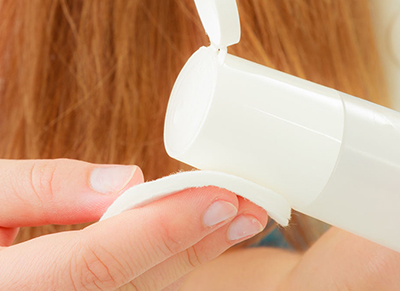
The term “microemulsion” was first used by Schulman1 in 1959 to describe a multiphase system consisting of water, oil, surfactant and alcohol, which forms transparent solutions. MEs are thermodynamically stable micellar dispersions with a particle size of 10-100 nm that instantly form with simple mixing. They are low-viscosity systems containing an aqueous phase, oil phase, surfactant, and a cosurfactant.
The cosurfactant, typically a polyol or alkanol, helps reduce the interfacial tension, which in turn helps to reduce the size of the dispersed droplets and normally is water-insoluble. The presence of the cosurfactant also reduces the rigidity of the interfacial film, leading to the formation of a bicontinuous structure typical of microemulsions.
MEs can exist as oil in water, water in oil, or bicontinuous emulsions that are oil or water soluble. ME formation is dependent on surfactant type/structure and can be formed using ionic or nonionic surfactants. If the surfactant is ionic and contains a single hydrocarbon chain like sodium lauryl sulfate, MEs will only form if a co-surfactant and/or electrolyte is present. With double chain ionics and some non-ionic surfactants, a cosurfactant is frequently not necessary.
The main current marketed applications for MEs include makeup removers, stable oil in water emulsion based wipes, silicone free hair conditioning shampoos, and as fragrance and essential oil solubilization.
Note, Nano emulsions are also clear colloidal dispersions but are not true MEs since they are not thermodynamically stable and frequently require high shear processing to form.
Advantages of Microemulsions
- Easy to produce with minimal mixing
- Very stable
- Visually clear
- Can significantly increase the solubility of actives and fragrances
- Can increase skin penetration and the efficacy of actives
- Are excellent for removing all types of makeup
- Conditioning shampoos and moisturizing body washes
Disadvantages
- Require high levels of surfactants
- Can be irritating
- Can sometimes be difficult to preserve
- Are thin and can only be thickened using water soluble polymers and still remain clear (not swellable polymers like Carbomer)
Recommended Surfactants/Solvents
- Plantaren® 2000 (Decyl Glucoside-BASF)
- Labrasol® (PEG-8 Caprylic/Capric Glycerides-Gattefossé), surfactant
- Plurol® Diisostearique (Polyglyceryl-3 Diisostearate-Gattefossé), cosurfactant
- Plurol® Isostearique (Polyglyceryl-6 Isostearate-Gattefossé), cosurfactant
- Plurol® Oleique (Polyglyceryl-6 Dioleate-Gattefossé), cosurfactant
- Transcutol® CG (Ethoxydiglycol-Gattefossé), solvent
Marketed Microemulsion Systems
- Caprol® Micro Express (PEG 6 Caprylic/Capric Glycerides, Polyglyceryl-6 Dioleate, Glyceryl Caprylate/Caprate-Abitec), will form a microemulsion using 9 parts water and 1 part Express. Can dissolve actives into Express before water addition
- Barcleanse BC (Sorbitan Oleate, PEG 10 Laurate, Water, Decyl Glucoside-Barnet Products) is a bicontinuous micro emulsion
- Plantasil® Micro (Dicaprylyl Ether, Decyl Glucoside, Glyceryl Oleate-BASF) is positioned as a silicone free hair conditioning booster
- TEGO® Care LTP (Sorbitan Laurate, Polyglyceryl-4 Laurate, Dilauryl Citrate-Evonik)
- Lamesoft® OD (Coco-Caprylate, Lauryl Glucoside, Glycerin, Polyglyceryl-2 Dipolyhydroxystearate, Polyglyceryl-3 Diisostearate-BASF)
- Emulgade® CPE (Olus Oil, Glycerin, Lauryl Glucoside, Polyglyceryl-2 Dipolyhydroxystearate, Glyceryl Oleate, Dicaprylyl Carbonate-BASF) recommended for making wipe nanoemulsions
- Lamesoft® PO 65 (Coco-Glucoside, Glyceryl Oleate-BASF) recommended as a skin refatting agent in body washes
References
- Schulman, J. H.; Stoeckenius, W.; Prince, M. J. Phys. Chem. 1959, 63, 1677
Ready to search for microemulsions?
Prospector has more than 80 search results for MEs!
Get Ingredient Data
The views, opinions and technical analyses presented here are those of the author or advertiser, and are not necessarily those of ULProspector.com or UL Solutions. The appearance of this content in the UL Prospector Knowledge Center does not constitute an endorsement by UL Solutions or its affiliates.
All content is subject to copyright and may not be reproduced without prior authorization from UL Solutions or the content author.
The content has been made available for informational and educational purposes only. While the editors of this site may verify the accuracy of its content from time to time, we assume no responsibility for errors made by the author, editorial staff or any other contributor.
UL Solutions does not make any representations or warranties with respect to the accuracy, applicability, fitness or completeness of the content. UL Solutions does not warrant the performance, effectiveness or applicability of sites listed or linked to in any content.



Dear Dr. Deckner:
Have a good day,asking for your help, and to your extensive experience, what solubilizers and emulsifiers would you recommend to make a transparent emulsion of vitamin A palmitate.
Thank you very much for your attention
With best wishes
Juan Jose Herrera
Chemist
[email protected]
Hello, and thank you for reading.
It depends on how much vitamin palmitate you are using and what else is in the formulation.
Please provide more detail.
Thank you,
George